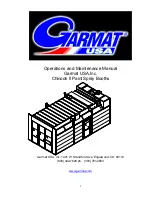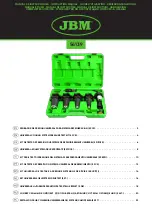
Play Structure Use Zone
1
Select Protective Surfacing
—One of the most important things you can
do to reduce the likelihood of serious head injuries is to install shock-
absorbing protective surfacing under and around your play equipment.
The protective surfacing should be applied to a depth that is suitable for
the equipment height in accordance with ASTM Specification F1292.
There are different types of surfacing to choose from; whichever product
you select, follow these guidelines:
1.1
Loose-Fill Materials:
1.1.1 Maintain a minimum depth of 9 in. (229 mm) of loose-fill materials
such as wood mulch/chips, engineered wood fiber (EWF), or
shredded/recycled rubber mulch for
equipment up to 96 in. (2438 mm) high; and 9 in. (229 mm) of
sand or pea gravel for equipment up to 60 in. (1524 mm) high.
NOTE: An initial fill level of 12 in. (305 mm) will compress to about a 9 in.
(229 mm) depth of surfacing over time. The surfacing will also compact,
displace, and settle, and should be periodically refilled to maintain at least
a 9 in. (229 mm) depth. X2.1.2 Use a minimum of 6 in. (152 mm) of
protective surfacing for play equipment less than 48 in. (1219 mm) in
height. If maintained properly, this should be adequate. (At depths less
than 6 in. (152 mm), the protective material is too easily displaced or
compacted.)
NOTE:
Do not install home playground equipment over concrete, asphalt,
or any other hard surface. A fall onto a hard surface can result in serious
injury to the equipment user. Grass and dirt are not considered protective
surfacing because wear and environmental factors can reduce their
shock absorbing effectiveness. Carpeting and thin mats are generally not
adequate protective surfacing. Ground level equipment – such as a
sandbox, activity wall, playhouse or other equipment that has no elevated
play surface – does not need any protective surfacing.
1.3 Use containment, such as digging out around the perimeter and/or
lining the perimeter with landscape edging. Don’t forget to account for
water drainage.
1.3.1 Check and maintain the depth of the loose-fill surfacing material. To
maintain the right amount of loose-fill materials, mark the correct level on
play equipment support posts. That way you can easily see when to
replenish and/or redistribute the surfacing.
1.3.2
Do not
install loose fill surfacing over hard surfaces such as
concrete or asphalt.
Page 25 of 28




































